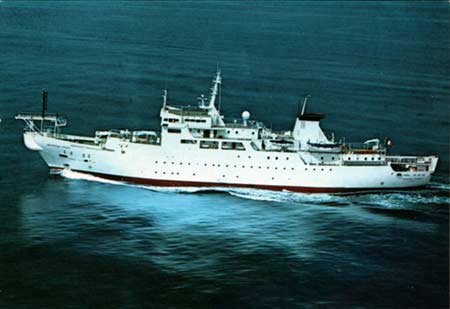Its Internet or a Telephone.
So, what happens when you place an Order to some company in US or UK, sitting in India by just clicking with your index finger?
Or what happens when you place a call to your friend who is residing in some other Continent?
All these Data are carried through a THREAD like thing, finer than your HAIR.
Its Fiber Optics.
Our fantastic wide world is linked together with these cables.
What's Fibre Optics?

An optical fiber is a flexible, transparent fiber made of very pure glass (silica) not much bigger than a human hair that acts as a waveguide, or "light pipe", to transmit light between the two ends of the fiber.
Optical fibers are widely used in fiber-optic communications, which permits transmission over longer distances and at higher bandwidths (data rates) than other forms of communication. Fibers are used instead of metal wires because signals travel along them with less loss and are also immune to electromagnetic interference.
Submarine Communication Cables

A submarine communications cable is a cable laid beneath the sea to carry telecommunications under stretches of water.
The first submarine communications cables carried telegraphy traffic. Subsequent generations of cables carried first telephony traffic, then data communications traffic. All modern cables use optical fiber technology to carry digital payloads, which are then used to carry telephone traffic as well as Internet and private data traffic. They are typically 69 millimetres (2.7 in) in diameter and weigh around 10 kilograms per metre (7 lb/ft), although thinner and lighter cables are used for deep-water sections.
As of 2010, submarine cables link all the world's continents except Antarctica.
What's in the Cable?

1 - Polyethylene
2 - Mylar Tape
3 - Stranded Steel Wires
4 - Aluminium water barrier
5 - Polycarbonate
6 - Copper or Aluminium tube
7 - Petroleum jelly
8 - Optical Fibers
How do they Lay these Cables, Undersea?

Submarine cables are laid using special Cable layer ships, such as the modern René Descartes, operated by France Telecom Marine.
It takes about 3 weeks for the ship, just for rolling the thousands of miles, communication cables. As soon as the whole cable is loaded on the ship, it is ready now for a long voyage of lay the cable from one continent to other.

A Plougher is used under the sea for ploughing the cables at the correct place. The plougher is connected to the Cable layer ship where its is operated by the experts for proper placement of the cables without disturbing the ocean environment.
This takes over several months or may be years for laying the cables under the sea between two continents.

Importance of Submarine Cables
As of 2006, overseas satellite links accounted for only 1 % of international traffic, while the remainder was carried by undersea cable.
The total carrying capacity of submarine cables is in the terabits per second while satellites typically offer only megabits per second and display higher latency. However, a typical multi-terabit, transoceanic submarine cable system costs several hundred million dollars to construct.
As a result of these cables' cost and usefulness they are highly valued not only by the corporations building and operating them for profit, but also by national governments.
Review
Cable Layed

Working

Cable Repair (Undersea cable cut by Anchor)


Google Warning Board

Discovery Channel's show :
Thanks,
Parag

Your comments are welcomed....!!
ReplyDeleteParag